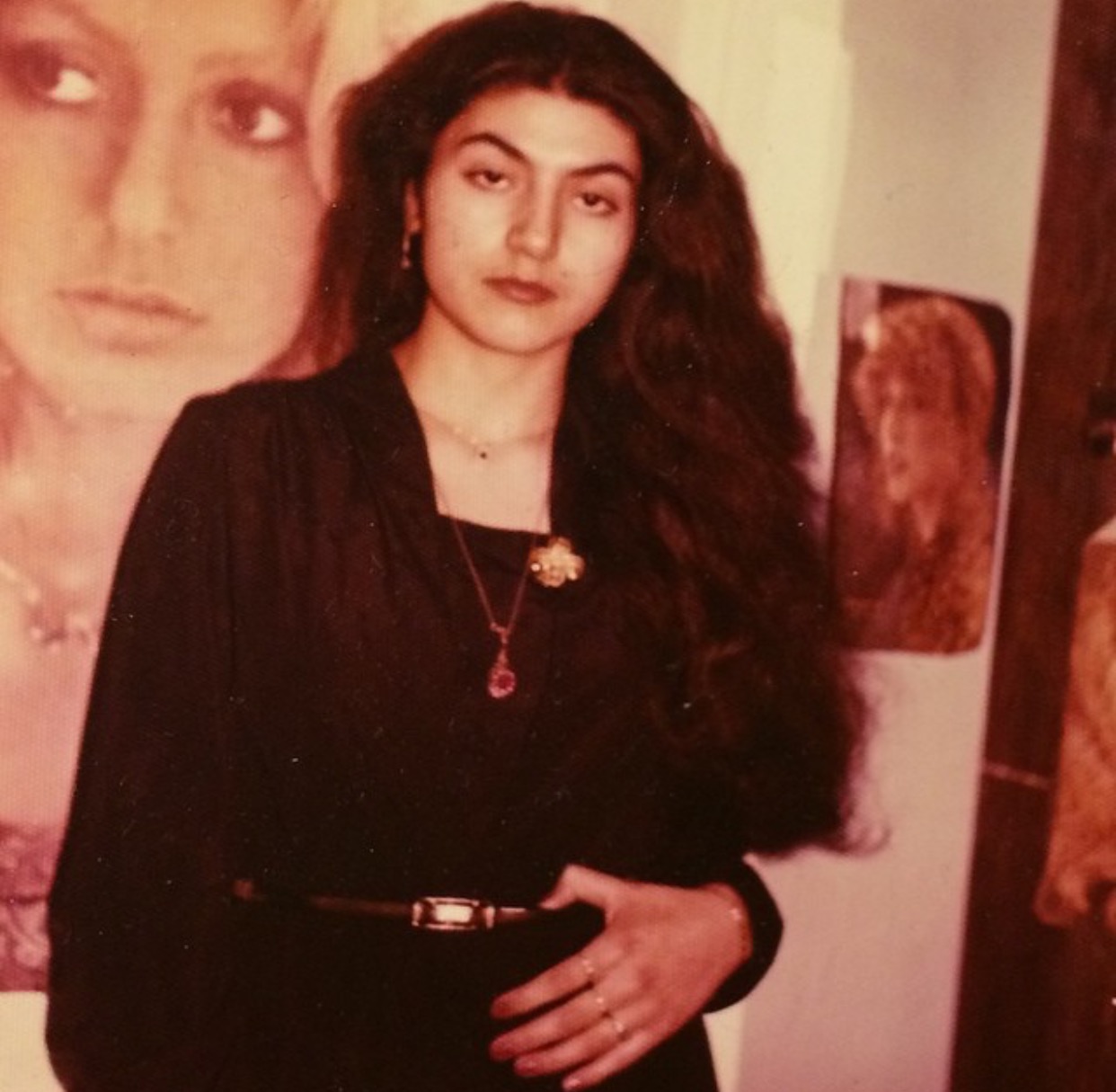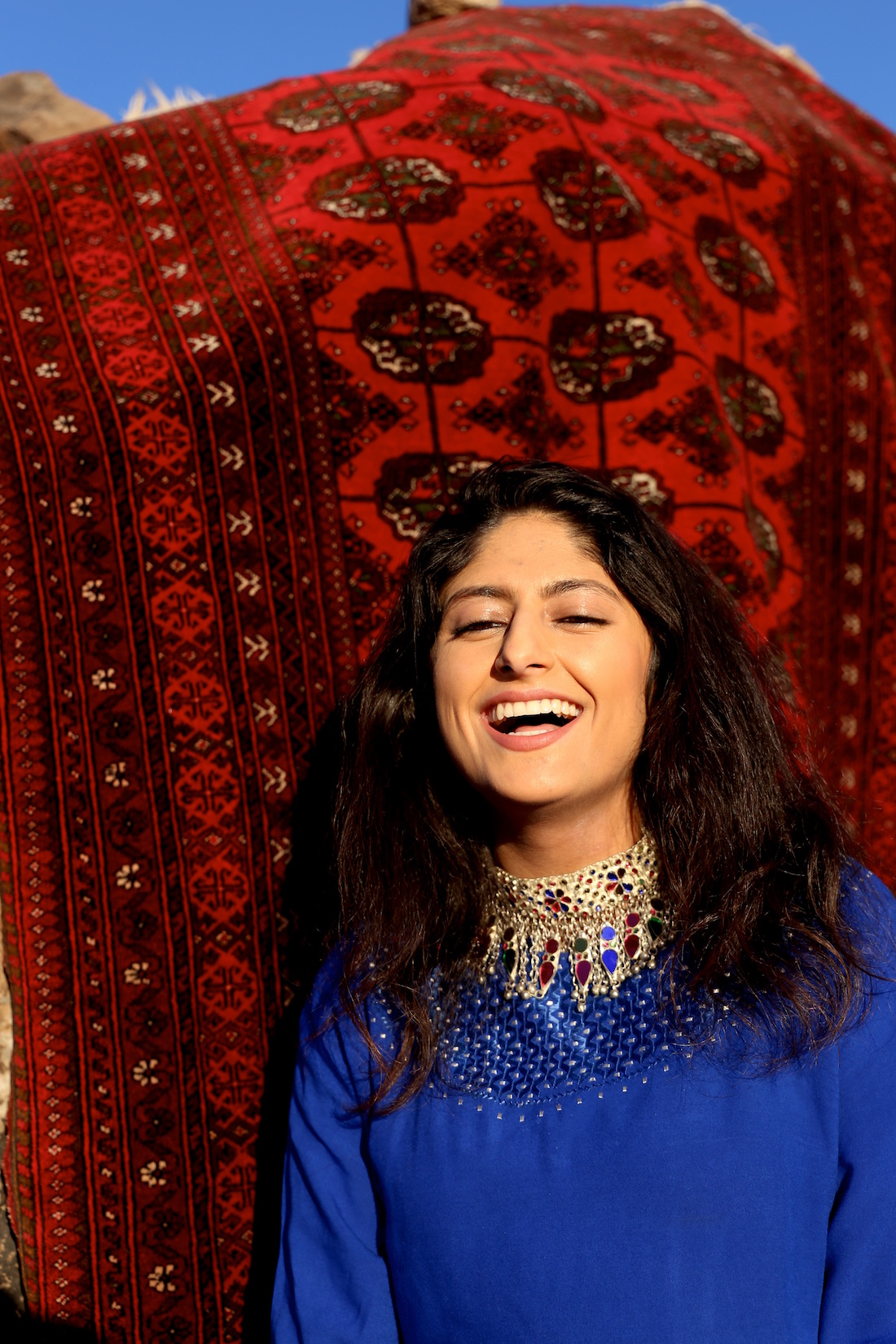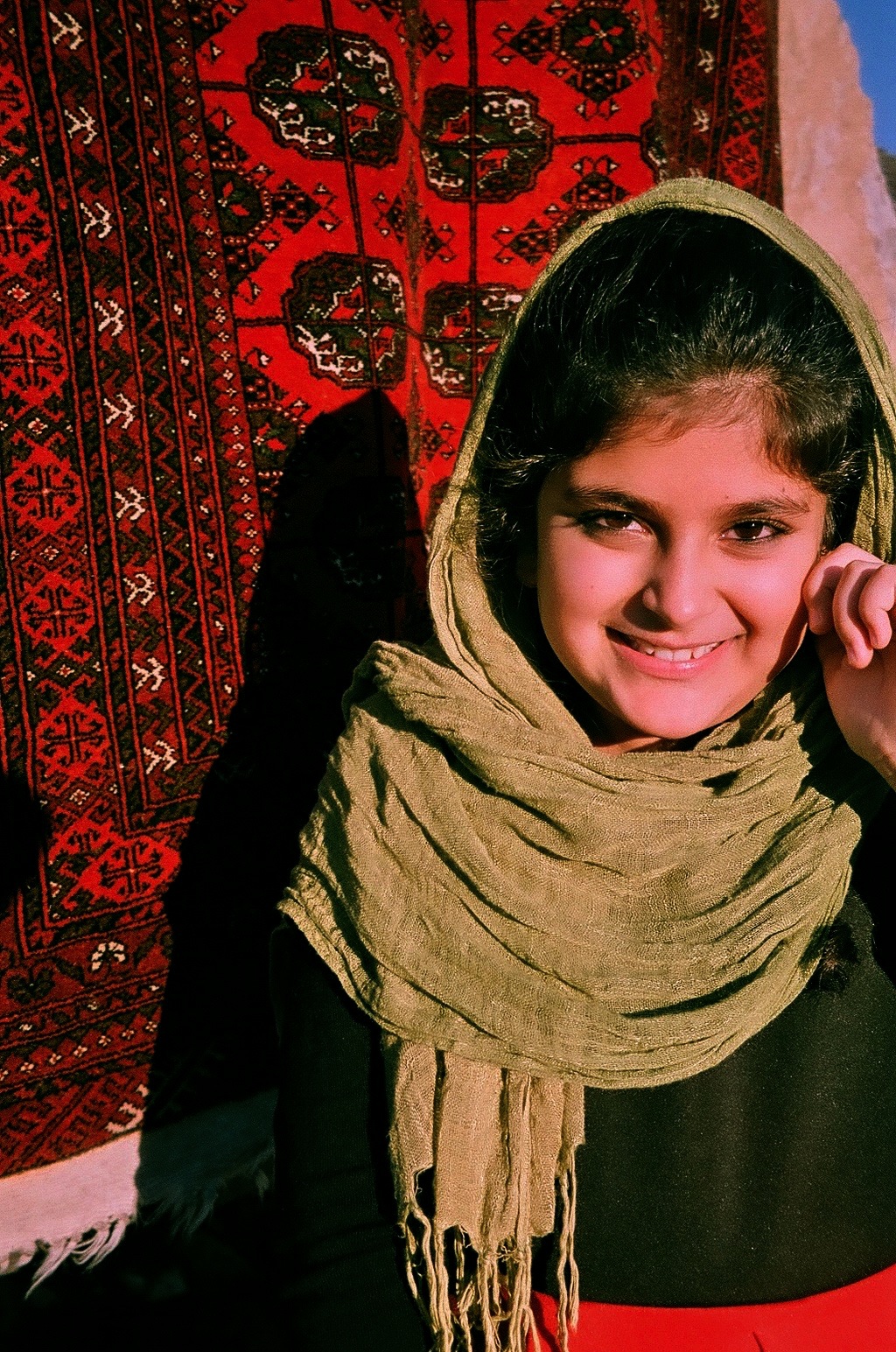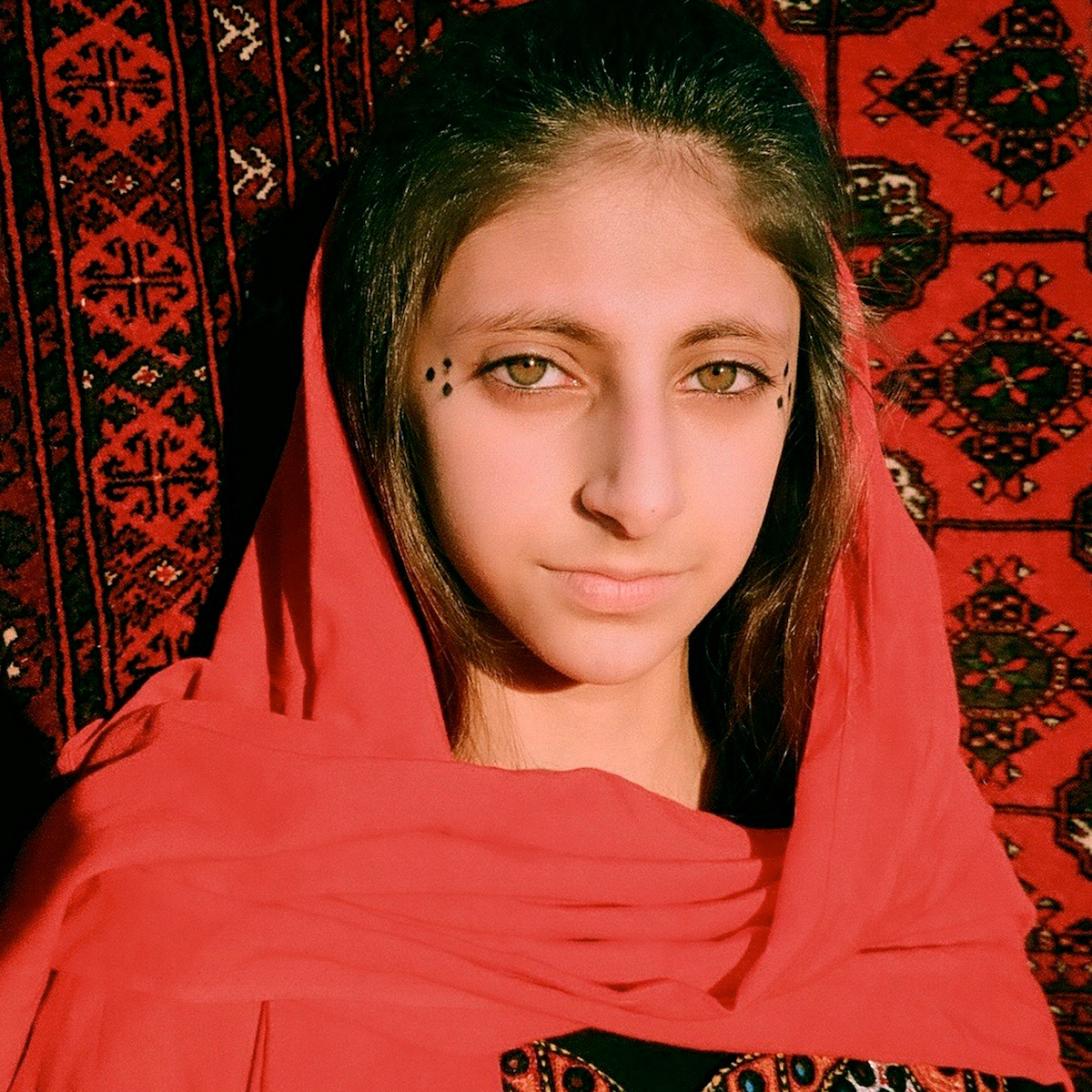Or, How I Learned to Stop Worrying and Love Being Afghan
The ‘Red Desert’ photo series strives to humanise Afghans. There are pervading concepts of what it means to be Afghan, and I aim to counteract them by capturing the bright essence of Afghan identity. Positive representation empowers a group of people, and is necessary for coming to terms with one’s identity. I am on a mission to portray my people in a positive light – one that will make others realise the vibrant energy within us Afghans.
One particular afternoon, I was in the backseat of my mom’s silver ‘97 Honda Accord as she sang along to Ahmad Zahir’s What Love is This in My Heart? (Pers. In Che Eshghist Ke Dar Del Daram?). The sun spilled through the trees and flashed onto my closed eyelids from the window; that was one of the only cassettes that my mother kept in the car and one of the two albums I listened to for most of my adolescence, the second being my mom’s favourite Googoosh tape. We lived in Sedona, a small town in the northern corner of Arizona that was surrounded by spectacular red rocks and mountains. During the winter, the mountains had white snow glazed on the peaks; yet, the redness of the rocks would continue to stubbornly bleed through.
We were the only Afghans in Sedona. Everyone knew us as the Afghan gem collectors, for my dad worked tirelessly to maintain a crystal and gem shop to support his family. My father has worked to support his family his entire life, whether that has meant us, or his mother and sisters. The moment he set foot out of Afghanistan, he started to set up business after business, each of which usually met its inevitable plummeting fate. One of his first projects was a family-friendly yoghurt store, which at the time he thought would be fitting to make colourful and clown-themed. It didn’t take him long to realise how much of a mistake that idea was, as children wouldn’t enter the store out of fear. Later, he married my mother – his first crush at the age of eight – and as fate had wanted, they moved to Arizona to set up Spiritstone Gems, which still stands in Sedona.
We spent most of our days inside the store; my parents even turned one of the spare rooms into a playroom for my little brother and me. They hung one of the rejected paintings of a blue-haired clown on a maroon wall, and set up a tiny television in a corner of it. They laid down a couple of rugs and toys for us to peacefully remain occupied with as they ran the shop. My mom gave me two VHS tapes: Beetlejuice, which a neighbour had given to us, and the popular Bollywood film Kuch Kuch Hota Hai (Something Happens). I watched both of these repeatedly, enough times to memorise Michael Keaton’s vulgar lines and figure out what the Indian actors were saying, as the tape hadn’t come with English subtitles. Anjali, played by the actress Kajol, was one of the first women of colour I saw on a screen. In her, I saw traces of myself that I had never witnessed before. We both had short black hair, and I began to wear a headband because she did, too – only my hair was much puffier than hers, which caused the headband to disappear under all my layers. Both of us also had a thin coat of hair that sat in-between our eyebrows, and our complexions were alike. I knew she wasn’t Afghan, but at the time, she was the closest thing to it.

The author’s mother standing in front of a Googoosh poster
As much as I wished to be Lydia Deetz in Beetlejuice, I knew Anjali represented me, and made me feel okay about being myself. She became especially important to my identity when I began school as the only brown kid in everyone’s class. Teachers would be shocked that I’d never had The Grinch Who Stole Christmas read to me before bedtime. What was even more of a surprise was the fact that I didn’t know who the Spice Girls were, and brought spicy potato-filled meals to school instead of simple peanut butter and jelly sandwiches. I eventually gathered enough pity from my peers to become known as the kid with ‘no culture’. Those years, all in all, were unbearably lonely; I had a strange, unpronounceable name, smelly lunches, and a thin moustache, too.
[My parents’] tales helped greatly as I came to terms with my Afghan identity, but the journey was lonely nonetheless
My mom would wait outside my classroom for me when school had finished. She had long, big curls that spiralled down to her waist. She bought her outfits from local boutiques, and made them appear as if they’d been featured in Vogue’s latest issue. There was a portrait of her on her wedding day in our living room, and one of the earliest thoughts I remember having as a child was, God is probably my mom in a wedding dress. One day after school, she held me tight and squished my cheek to hers as we walked towards her little car. As usual, Ahmad Zahir began to sing out of the speakers as soon as she turned the stereo on. I stared out into the vastness of Sedona and sombrely asked her where all the other Afghans were. Why didn’t anyone else look like me? Or spoke our language? Or ate the food we did? As much as I credited Anjali as my representative and saviour, I still didn’t understand her. I wasn’t familiar with the foods she ate, or the colourful dresses she wore. Like everyone else around me, Kajol had also come from a totally different world than I.

From the Red Desert series
When we arrived at our tan dome-shaped house, my mom ran inside and scurried through her belongings until she came across the magazine she was looking for. She handed me a copy of National Geographic, which had on its cover a haunting green-eyed girl staring straight into my soul: Sharbat Gula, a.k.a. the famous ‘Afghan girl’. My mother then went on to explain to me that Sharbat was like me. I remember staring at the photo for a long time in pure confusion, trying to grasp what my mom was talking about. The girl’s hair and complexion were lighter than mine, and her eyes brilliant, angry emeralds. None of my features resonated with hers.
My mom picked up on my perplexity and sat me down on our mint-coloured sofa. She put a small pillow on her lap, on which I laid my head. Running her fingers softly through my hair, she told me about the diversity of Afghanistan, about the many tribes, and the wide variety of ethno-linguistic groups and regions, each of which possessed their own incomparable culture, charm, and beauty. As different as Sharbat and I were from one another, I knew we’d come from the same glorious land. I became enchanted with my mom’s stories, and began to think about them everywhere I went. As I grew older, I started to seek more such tales, wanting to vicariously live through my parents’ memories of their life in Afghanistan before immigrating to the States. Their tales helped greatly as I came to terms with my Afghan identity, but the journey was lonely nonetheless.

From the Red Desert series
Most people of colour I have encountered have shared stories with me about repressing their roots or going through stages in their lives in which they desperately wanted to inhabit another body. This is an engrained mentality that takes years – maybe even a lifetime – to get rid of. I myself am still trying to do so. I used to put my hair through torture as I straightened (burnt, rather) my natural curls daily. I even attempted to go by my middle name, Jasmine, during a very strange and uncomfortable part of my life. Doing these things didn’t make me appreciate my true self very much, but I’d been fed the idea that they’d make me be accepted by everyone else. It took years for me to truly grasp what my roots meant to me, and how I could integrate them into my life confidently and with grace – and I did so because I had no other choice. I could pretend to be a ‘Jasmine’ all I wanted, but it would never feel right because my mom had named me Negine, meaning ‘precious stone’ in Persian. Yes, that’s what the gem collectors named their daughter.
I’ve reached a point in my life where I do what I can to make people’s coming of age stories less painful. It takes being vocal to bring about change, and I long to see Afghans unite to let others like them know that they aren’t alone; to see them feel positive about themselves and reinforce the representation our society desperately lacks; and to counteract this dejected, lifeless stereotype others are so willing to accept about Afghans and conquer it by being themselves.
More of Negine’s photographs can be viewed on her website.
Cover image from Negine’s Red Desert series (detail).

